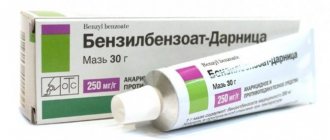Pharmacodynamics and pharmacokinetics
The drug affects many gram-positive and gram-negative microorganisms. Its therapeutic effect is due to the fact that the drug belongs to nitrofurans and includes a molecule that can bind to biologically active substances in microbial cells that can transfer a hydrogen molecule. This prevents further activity of the microbial cell.
To achieve a positive result, the active substance of the drug in a small concentration is sufficient.
The drug is absorbed in the intestine through passive diffusion. When taken orally, it has a disinfecting effect on the kidneys, urethra, and bladder. The drug is excreted by the kidneys.
On forums you can often come across the question, is Furagin an antibiotic or not? This medicine is an antibacterial and antimicrobial drug. Unlike many antibiotics, it does not have a systemic effect. The drug is intended for topical use and cannot in any way be classified as a systemic antibiotic .
Pharmacological properties of the drug Furagin
Furagin belongs to the group of antimicrobial agents - nitrofuran derivatives that have a wide spectrum of antimicrobial action. Effective against gram-positive and gram-negative bacteria; in some cases it is effective against microorganisms resistant to sulfonamides and antibiotics. The mechanism of the antimicrobial action of the drug is associated with the reduction of the nitro group to the amino group. In this case, the reduced forms of the drug have a direct effect on cellular macromolecules and electron transport in the microbial cell. Interacting at the DNA level, it causes breaks and mutations in it, which leads to disruption of its biological function. It is also assumed that the reduced form of the drug oxidizes a number of enzyme systems of microorganisms. Regarding some microorganisms, the antimicrobial effect of Furagin is higher than that of other nitrofurans. The drug is especially active against urinary tract infections.
Indications for use of Furagin
Indications for use of Furagin:
- preventing the occurrence of an infectious process during the treatment of recurrent diseases;
- infectious and inflammatory diseases of the genitourinary system.
Specialists can prescribe Furagin for cystitis , prostatitis , pyelonephritis , urethritis , including after operations.
In addition, in pharmacies you can find such a remedy as Furagin Lect. It also has antimicrobial effects.
Indications for use of Furagin Lect:
- infections of the skin and soft tissues;
- urogenital infections;
- prophylaxis during urological operations ;
- gynecological infections;
- infectious and inflammatory diseases of the mouth and pharynx;
- severe infected burns ;
- infected wounds.
Contraindications
You cannot use Furagin tablets for cystitis and other infectious and inflammatory diseases of the genitourinary system if the body has a negative reaction to the drug and kidney failure .
In addition, this remedy is contraindicated in the following cases:
- congenital enzymatic deficiency of glucose-6-phosphate dehydrogenase ;
- if the patient is less than a week old;
- allergies to drugs belonging to the nitrofuran ;
- multiple lesions of peripheral nerves .
Furagin is not used during pregnancy and lactation .
Interactions of the drug Furagin
When used simultaneously with drugs of the tetracycline group, there is a potentiation of the effects of the drug, in combination with erythromycin, fusidine, nystatin, levorin - an increase in the effect; with ristomycin, chloramphenicol, polymyxins, long- and short-acting sulfonamides, nalidixic acid - mutual reduction of effect. Antacids reduce the activity of the drug by reducing its absorption. With the simultaneous use of nitrofuran derivatives with 8-hydroxyquinoline nitroxoline, the neurotoxic effect of these drugs is summed up. The drug should not be used with adrenergic agonists (ephedrine, phenamine), anorexigenic drugs, or MAO inhibitors.
Side effects
The following side effects are possible when taking tablets:
- gastrointestinal tract: loss of appetite , upset stool, pain in the abdomen, vomiting, nausea;
- allergies: skin itching , rash;
- CNS: dizziness , neuritis , blurred vision, drowsiness , multiple lesions of peripheral nerves .
In addition, malaise , increased body temperature, and chills .
Instructions for use of Furagin (Method and dosage)
For those who have been prescribed Furagin tablets, the instructions for use indicate that they should be taken with meals. This should be done in the following dosages:
- children are given the drug at 5-7 mg/kg per day during standard therapy, as well as 1-2 mg/kg during long-term therapy;
- in case of prevention of infectious and inflammatory diseases, give 1 tablet once in the evening;
- adult patients need to take 2 tablets every day 4 times, at the end of the course they are taken 3 times a day in the same dose.
Instructions for use Furagin recommends simultaneously following a protein diet .
The duration of therapy does not depend on what Furagin is used in each specific case. It should be a maximum of 7-10 days. If necessary, treatment of cystitis with tablets, as well as other inflammatory and infectious diseases of the genitourinary system, can be extended after 10-15 days.
With long-term use, liver and kidney function should be monitored, as well as leukocyte .
Instructions for use Furagin Lect informs that the product is also intended for internal use. Adults should take 50-100 mg, children over 3 years old should take 25-50 mg. The medicine in the prescribed dosage is taken 3 times daily. Therapy is designed for 7-10 days. If the course needs to be repeated, you need to take a break for 10-15 days.
For prevention, take 50 mg of the drug once half an hour before the procedure.
In addition, the drug can be used externally 2-3 times every day to wash wounds or wet bandages. The product is also used as a mouth and throat rinse 2-3 times daily.
Furagin tablets 50 mg No. 10x3
Name
Furagin tablet 50mg No. 10x3
Main active ingredient
Furazidin
Release form
Pills
Compound
Active ingredient: furagin. Each tablet contains 50 mg furagin. Excipients: modified corn starch, lactose monohydrate, sugar, polysorbate 80 (Tween-80), stearic acid.
Dosage
50mg
Pharmacological properties
Pharmacodynamics
Furagin is an antibacterial agent with a bacteriostatic effect, effective against both gram-positive (Staphylococcus epidermidis, Staphylococcus aureus, Staphylococcus faecalis) and gram-negative (Enterobacteriaceae - Escherichia coli, Klebsiella spp, Salmonella, Shygella, Proteus, Enterobacter, etc.) bacteria. The drug acts on staphylococci and other pathogenic strains of microorganisms that are resistant to sulfonamides and antibiotics. Resistance of microorganisms to furagin develops slowly and does not reach a high degree. The minimum inhibitory concentration of a drug in the treatment of urinary tract infections ranges from 0.7 mg/l to 20 mg/l. Pseudomonas aeruginosa is resistant to the drug. Nitrofurans inhibit the enzyme systems of microorganisms, as well as other biochemical processes in the bacterial cell, causing the destruction of its cytoplasmic membrane and cell membrane. As a result of the action of nitrofurans, microorganisms release fewer toxins, which improves the general condition of the patient even before the pronounced suppression of the microflora.
Pharmacokinetics
Absorption Furagin is well absorbed from the gastrointestinal tract. Absorption of the drug mainly occurs from the distal small intestine by passive diffusion. Absorption from the distal small intestine exceeds absorption from the proximal small intestine by 4 and 2 times, respectively. This must be taken into account when simultaneously treating urogenital infections and diseases of the gastrointestinal tract (chronic enteritis). Furagin binds to blood plasma proteins. After a single dose of 200 mg, the maximum concentration of the active substance is achieved in the blood plasma after 30 minutes, remains at this level for 1 hour, then slowly decreases. Bacteriostatic concentration in blood plasma persists for 8-12 hours. Metabolism/elimination 10% of the administered dose is biotransformed in the liver and kidneys; if renal function is impaired, most of the administered dose is biotransformed. The half-life is short (about 6.1 hours). Furagin is excreted by the kidneys, mainly by tubular secretion (85%). 8-13% of furagin enters the urine unchanged, where its concentration on average is many times higher than the minimum inhibitory concentration for most sensitive bacteria. The maximum concentration of furagin in urine is 5.7 μg/ml. The effect of furagin is more pronounced in an acidic environment (pH ≤5.5). Agents that alkalinize urine reduce the therapeutic effect of furagin (slow down reabsorption and accelerate the excretion of furagin in the urine).
Indications for use
Acute and chronic urinary tract infections: pyelonephritis, cystitis, urethritis, prostatitis. Postoperative urinary tract infections: postoperative pyelonephritis, cystitis, prostatitis.
Contraindications
- Hypersensitivity to furagin, to derivatives of the nitrofuran group or to excipients of the drug;
- severe renal failure (glomerular filtration rate (GFR) less than 30 ml/min);
- polyneuropathy (including diabetic);
- deficiency of glucose-6-phosphate dehydrogenase (risk of hemolysis);
- porphyria (diseases caused by impaired metabolism of hemoglobin breakdown products);
- pregnancy period;
- breastfeeding period;
- children under 6 years of age (for this dosage form);
The use of furagin is not recommended in cases of urosepsis and parenchymal kidney infections.
Use during pregnancy and lactation
Pregnancy Use is contraindicated. There are no well-controlled clinical studies on the safety of the drug during pregnancy. Nitrofurans penetrate the placental barrier, but their concentration in the fetal blood is many times lower than in the mother's blood. Breastfeeding Nitrofurans are excreted in breast milk. The use of nitrofurans during breastfeeding is contraindicated, since the development of hemolytic anemia in newborns is possible.
Impact on the ability to drive vehicles and maintain machinery
The drug does not affect the ability to drive vehicles and maintain machinery.
Directions for use and doses
Furagin is taken orally after meals with plenty of water. Adults: 100-200 mg (2-4 tablets) 2-3 times a day. The course of treatment is 7-10 days and depends on the severity of the disease, the effectiveness of treatment, as well as the functional state of the kidneys. If necessary, the course of treatment is repeated after 10-15 days. The maximum daily dose is 600 mg. For the prevention of chronic urinary tract diseases - 50 mg per day. Children over 6 years of age: for acute infection, a dose of 5-8 mg/kg body weight per day, dividing the daily dose into 3-4 single doses, for 7-8 days. If long-term treatment is necessary, the dose is reduced to 1-2 mg mg/kg body weight per day. Use the drug with caution in patients with impaired liver and/or kidney function; liver and/or kidney function indicators should be monitored during therapy (see also sections “Contraindications”, “Precautions” and “Overdose”). Prescribe the drug with caution to elderly patients (see also section “Precautions”). If you forget to take your next dose, take it as soon as you remember, but skip it if it is almost time for your next dose. Never take a double dose of the medicine to replace a missed dose.
Side effect
Frequency of side effects according to the MedDRA classification system (Medical Dictionary of Regulatory Terminology): Very common (≥1/10); often (≥1/100 to
Overdose
Nitrofurans are low toxic. Toxic effects are usually possible in patients with impaired renal function. Symptoms: headache, dizziness, depression, peripheral polyneuritis, allergic reactions (urticaria, angioedema, bronchospasm), nausea, vomiting, hemolytic anemia (patients with glucose-6-phosphate dehydrogenase deficiency), megaloblastic anemia, very rarely - liver dysfunction. Treatment: gastric lavage, intravenous administration of a solution for infusion (introduction of a large amount of liquid). Conduct symptomatic and supportive therapy. In severe cases, hemodialysis is performed. There is no specific antidote.
Interaction with other drugs
Agents that alkalize urine reduce the therapeutic effect of furagin (accelerate the excretion of furagin in the urine). Medicines that acidify urine (acids, including ascorbic acid, as well as calcium chloride) increase the concentration of furagin in the urine (its excretion in the urine slows down), the therapeutic effect increases, but the risk of developing toxic phenomena may also increase. Furagin is not recommended to be taken simultaneously with chloramphenicol, ristomycin and sulfonamides, as the risk of hematopoietic suppression increases. Nitrofurans in vitro exhibit antagonism to quinolones (nalidixic acid, oxolinic acid, norfloxacin), however, the clinical significance of this interaction in vivo has not been studied, so simultaneous use of these drugs should be avoided. Probenecid and sulfinpyrazone (uricosuric drugs) reduce the excretion of furagin, thus increasing the risk of unwanted side effects and toxic effects. Antacids containing magnesium trisilicate reduce the absorption of furagin. In case of renal failure, it is not recommended to take furagin simultaneously with aminoglycosides. Do not drink alcohol during treatment, as unwanted side effects may occur (rapid heartbeat, pain in the heart, headache, nausea, vomiting, convulsions, low blood pressure, feeling of heat and fear).
Precautionary measures
Caution should be observed in patients with impaired renal function (if GFR is less than 30 ml/min, use is contraindicated), anemia, deficiency of B vitamins and folic acid, and lung diseases. Long-term use of furagin can cause the development of peripheral neuropathy. Prescribe the drug with caution to patients with diabetes mellitus, since taking the drug may contribute to the development of polyneuropathy. In the course of experimental studies and clinical observations of patients, it was revealed that nitrofurans adversely affect testicular function, which manifests itself in the form of a decrease in the amount of sperm and ejaculate, a decrease in sperm motility and pathological changes in their morphology. In case of long-term use of furagin, it is necessary to periodically monitor the number of leukocytes in the blood, indicators of liver and kidney function, as well as lung function, especially in elderly patients (over 65 years of age). In rare cases, pseudomembranous colitis may develop, which is caused by suppression of the natural microflora of the rectum and the proliferation of Clostridium difficile. In mild cases of pseudomembranous colitis, it is enough to stop taking the drug. When carrying out appropriate therapy, do not take medications that slow down intestinal motility. Taking the drug with food reduces the risk of developing colitis without significantly affecting the absorption of the drug. Laboratory tests in patients taking furagin may give a false-positive reaction for the presence of glucose in the urine if the copper reduction method is used to determine it. Furagin does not affect the results of determination of glucose in urine performed by the enzymatic method. Lactose. Each tablet of the drug contains 18.8 mg of lactose monohydrate. This medicine is not recommended for patients with rare congenital galactose intolerance, Lapp lactase deficiency or glucose-galactose malabsorption. Sucrose. Each tablet contains 10 mg of sucrose. This medicine is not recommended for patients with rare congenital fructose intolerance, glucose-galactose malabsorption or sucrase-isomaltase deficiency.
Storage conditions
Storage conditions: protected from moisture and light
Buy Furagin tablet 50 mg in container pack No. 10x3 in the pharmacy
Price for Furagin tablet 50 mg in container pack No. 10x3
Instructions for use for Furagin tablet 50 mg in container pack No. 10x3
Overdose
Overdose symptoms:
- dysfunction of the central nervous system: inflammation of peripheral nerves, psychosis , deterioration of mood;
- allergic reactions: angioedema , urticaria , bronchospasm ;
- nausea;
- liver dysfunction.
If the drug is used in excess doses, gastric lavage , as well as drug elimination of overdose symptoms. In severe situations, hemodialysis .
Side effects of the drug Furagin
Possible decrease or loss of appetite, heartburn, nausea, sometimes vomiting, pain in the epigastric region, dizziness, allergic reactions. Sometimes neurotoxic phenomena are observed - headache, dizziness, insomnia, general weakness, increased sweating. In the described cases, the dose of the drug should be reduced or stopped altogether. Side effects are reduced when taking the drug only after meals and when drinking plenty of liquid. With prolonged use of the drug in high doses, as well as in the case of prolonged treatment with low doses, polyneuritis may occur with decreased renal function, cardiac decompensation, or alcoholism. With insufficient liver function, as well as hereditary deficiency of enzymes of the pentose phosphate cycle, acute hemolytic anemia may develop in case of prolonged treatment or use in high doses.
Furagin's analogs
Level 4 ATC code matches:
Furadonin
Furamag
Such analogues of Furagin are known as Furasol and Furamag . These medications cannot be replaced at your own discretion, without consulting your doctor.
Which is better: Furamag or Furagin?
Often on medical forums people ask about Furagin analogues. Most often in this case, Furamag . This product contains potassium furazidin and basic magnesium carbonate .
The differences between Furamag and Furagin mainly lie in the fact that the first drug has higher bioavailability. And in the blood the maximum concentration of its active component remains longer. Accordingly, those who are interested in which is better - Furamag or Furagin - can clearly answer that the bacteriostatic effect of the first remedy is higher.
Furagin for children
Children of all ages often suffer from urinary tract infections However, often an incompletely cured disease can return. This can be avoided if you take the appropriate medications according to the instructions. In this case, experts very often recommend antibiotics . However, if for one reason or another they are not suitable for use, Furagin is prescribed to children. Unlike many antibiotics, it is not addictive.
In addition, this remedy combines well with many other medications. For children who tolerate it well, the drug is prescribed not only for the treatment of inflammatory and infectious diseases , but also for prevention purposes.
However, it should not be given to patients under 1 month of age, especially if the baby is not even a week old. In addition, the drug is prescribed with caution for children under 3 years of age.
The dosage of Furagin for children can be from 5 to 7 mg per 1 kg of weight. For babies up to one year old, the tablets are ground into powder, which is mixed with a certain amount of liquid (milk, formula). If long-term therapy is planned, the specialist reduces the dosage for children to 1-2 mg per 1 kg of weight.
Special instructions for the use of the drug Furagin
It is prescribed with caution in cases of impaired renal function, as well as in patients with diabetes mellitus, since the use of the drug may cause symptoms of polyneuropathy. It is not recommended to prescribe Furagin for urosepsis, as well as for infection of the kidney parenchyma. During the period of use of Furagin, false-positive results of determining glucose in urine using Benedict and Fehling solutions may be observed. It is recommended to determine glucose in urine using the enzymatic method. During long-term treatment with Furagin, the level of blood leukocytes, as well as indicators of liver and kidney function, should be periodically monitored. Furagin does not affect the speed of psychomotor reactions, so it can be prescribed to patients whose activities require increased attention.
Reviews about Furagin
Reviews about Furagin for cystitis and other infectious and inflammatory diseases are very contradictory. The product has helped some, while others complain that they have not noticed any improvement. In addition, you can often find reports that there are side effects when taking pills. However, positive opinions about the drug are still more common.
Parents who gave Furagin to their children also left mostly good reviews. They note the rapid action and effectiveness of this product.
Furagin price, where to buy
Furagin's price is on average about 200 rubles. The medicine is considered to be very affordable compared to analogues; this price of tablets for cystitis makes them a fairly popular remedy. This drug is often prescribed by doctors and is often sought after in pharmacies.
The price of Furagin in Ukraine is also quite affordable. On average it is about 65 hryvnia.
- Online pharmacies in RussiaRussia
- Online pharmacies in UkraineUkraine
- Online pharmacies in KazakhstanKazakhstan
ZdravCity
- Furagin tablets 50 mg 30 pcs.
Obolenskoe JSC Obolenskoe farm. enterprise 188 rub. order - Furagin-Aktifur capsules 50 mg 30 pcs. JSC ALIUM/JSC Obolenskoye FP
RUR 527 order
- Furagin tablets 50 mg 30 pcs. Olainfarm JSC
RUB 268 order
- Activetex fom therapeutic coating healing without scars 10x10 n10 (furagin-sea buckthorn oil)Altex Plus
RUB 308 order
- Furagin tablets 50 mg 30 pcs Usolye-Sibirsky Chemical Pharmaceutical Plant OJSC
100 rub. order
Pharmacy Dialogue
- Furagin-LekT 50 mg No. 30 Tyumen.khim. factory
116 RUR order
- Furagin tablets 50 mg No. 30Ozon LLC
RUB 204 order
- Activtex wipes (FL (furagin, lidocaine) No. 10) Altex LLC
RUB 213 order
- Furagin tablets 50 mg No. 30Olainskiy HFZ
RUB 271 order
- Furagin (tab. 50 mg No. 30) Usolye-Sibirsky Chemical Physics Complex
107 RUR order
show more
Pharmacy24
- Furagin 5 mg N30 tablets PAT "Kievmedpreparat", Ukraine
47 UAH. order - Furagin 50 mg No. 30 tablets AT "Olainfarm", Latvia
79 UAH order
PaniPharmacy
- Furagin tablets Furagin tablets 0.05g No. 30 Latvia, Olainfarm JSC
90 UAH order
- Furagin tablets Furagin tablets 50 mg No. 30 Ukraine, Kievmedpreparat OJSC
49 UAH order
- Atraumatic medical napkin with furagin 6x10cm Ukraine, Sarepta-Mediplast
16 UAH order
show more




